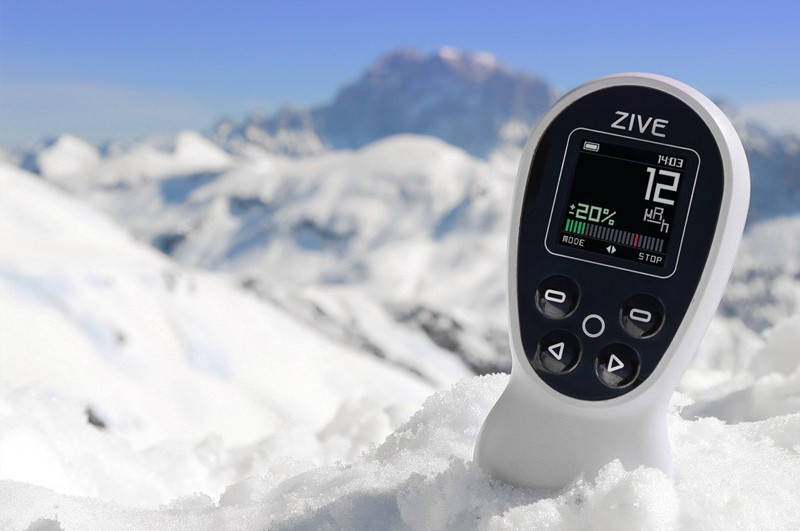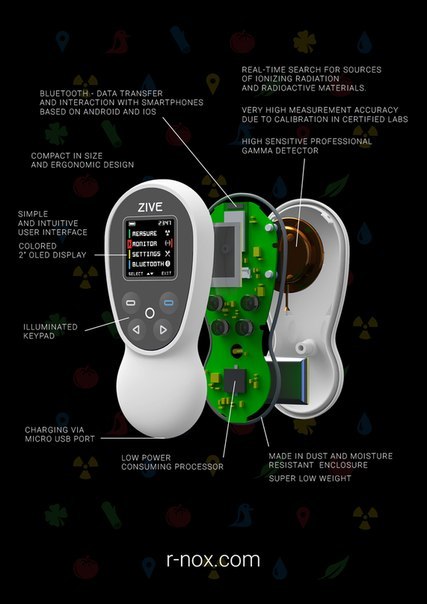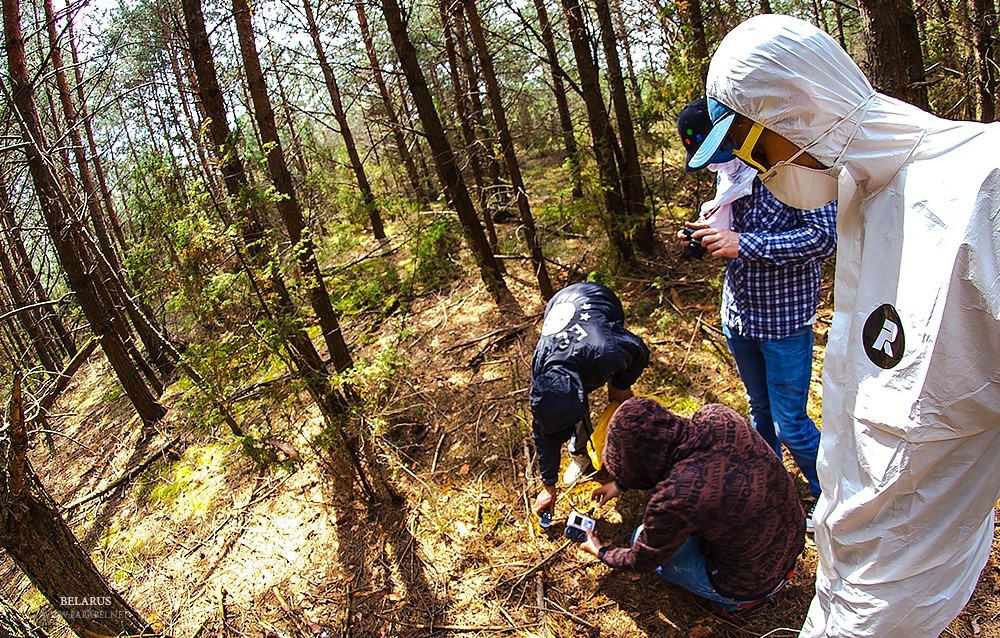Dosimeter on the Internet of Things: we make a map of radioactive zones for ourselves and the whole world

One of these days Minsk will host an exhibition of new devices created within the framework of Belarusian iron start-ups - Party Hard! 2016. We decided to talk about one of the most interesting exhibits of this exhibition - the smart dosimeter ZIVE, which synchronizes with a smartphone and collects data for a global radiation contamination map.
“We are a startup that monitors the environment,” says Vadim Radziwill, the founder of R-NOX. He is a technician, with a group of enthusiasts created a modern tech dosimeter.
Why do you need such a device?
“I worked at the enterprise with these square devices, and I was bored with using them,” says Vadim about industrial gauges of the Soviet design. “We called them walnuts — inconvenient to manage and everything.”
')
Few people have dosimeters, but this does not mean that the device is irrelevant: after the accident at the Chernobyl nuclear power plant in 1986, Belarus became the leader in the number of territories contaminated by radiation. According to the Atlas of the consequences of the Chernobyl accident, comparable in terms of the level of pollution there is only in Ukraine and Russia.
It is not surprising that the idea of a new generation of radiation monitor appeared in Belarus, which combined the convenience of the latest mobile devices with the accuracy of professional-level measurements.
The new gauge was called ZIVE, from Czech this word translates as “live”.

The device is designed on the basis of a Geiger-Muller counter (Beta-1M-1). The principle of its work is closely connected with the idea of the Internet of things: it interacts with the environment, tracking radiation levels in the background, and sends the measurement results to a smartphone, and if the Internet is available, the data goes to the server, where a global map of radiation contamination is formed.
Thanks to ZIVE, you can constantly monitor the radiation background: at home, on a walk, while choosing food. The mobile application will calculate the dose of radiation received for a specific user and warn him in case of danger. There will also be a more accurate answer to the question: are there any problems with radiation within individual regions? After all, the quality of maps for the CIS countries can be questioned, since they were made according to the calculations of 1986, and not on the basis of real measurements.
How is the map of radioactive zones formed?
According to the developers of the dosimeter, ZIVE users will become participants in a global environmental project and will themselves create new accurate radiation contamination maps. This will happen thanks to a bundle of dosimeter-smartphone-server.

The dosimeter itself captures only the background radiation. Then he communicates with the smartphone via bluetooth. The data is loaded into the mobile application, their volume is calculated in kilobytes.
Then the measurement results over the Internet are transmitted to the server. Priority is given to wi-fi networks in order not to scare device users away with the prospect of losing all mobile traffic. Although the data takes up less than some applications consume - adds Vadim.
You can use the device without a phone. While it works only with smartphones on Android version 4.2. Be sure to have bluetooth and GPS.
On the server, large data (big data) from ZIVE dosimeters are stored in a virtual cloud database, for each measurement information is recorded about the radiation background, coordinates, altitude and the speed of the object.

“It is necessary to know where the data came from,” explains Vadim. At the height of the flight of the aircraft radiation is higher. The higher the speed of the object, the greater the error. If there are peaks in the data set, the system will check their accuracy, taking into account all the listed information.
Only then the data will be on the map. On one layer you can see the real measurement points, on the second - the usual heat map of radiation pollution.
Dosimeter as an alternative source of information
“These big data are of great value,” says Vadim. “In fact, our goal is not the creation of ZIVE instruments, but the collection of data.”
The data will form a map, so the more users in a particular location, the more reliable and complete the map. Members of the R-NOX team collect information in Germany and England - the devices will get to these countries first. Also, measurements are collected in Mexico, USA, Ukraine and Belarus.


The guys from R-NOX visited the most polluted areas in Belarus, Ukraine and Russia. What is made of these visits, except for the dose of radiation? Many of them were surprised: according to Vadim, a typical situation is when the land is considered clean, they plow and plant on it ... And there is a forest across the road, the entrance to which is forbidden.
And even if we assume that the field at 4–5 meters is really completely clean, then there remains such a factor as the transport of particles with surface waters, dust, or animals.
In such a situation, the initiative of R-NOX is highly relevant: to determine whether there is a radiation problem in the country. After all, for example, during the summer fires in the territory near the Chernobyl NPP, officials argued that the background is normal and there is no danger. And there were no alternative sources of information in the media, except for the hypothetical evaluations of Greenpeace specialists.
Another device can be used for flights and the passage of X-ray images in medical institutions. That is, fix the amount of radiation received per year and do not come close to its limit. Although Vadim is skeptical: he is sure that people will rather spend money on a new iPhone than on a dosimeter.
Now ZIVE is in the market entry stage. The company plans to work on the map and the development of new devices. Another task is to replenish the team with technical specialists.
UPD . We answer the question of why this article appeared in the Promwad blog: we are friends with the R-NOX team. They designed the dosimeter and put it into production on their own. We have developed a part of mobile software for them and shared our experience in the course of the implementation of the ZIVE project. For us, this project was especially interesting, because the development for the Internet of things is one of our specializations, the Promwad Mobile division deals with this.
Source: https://habr.com/ru/post/276467/
All Articles